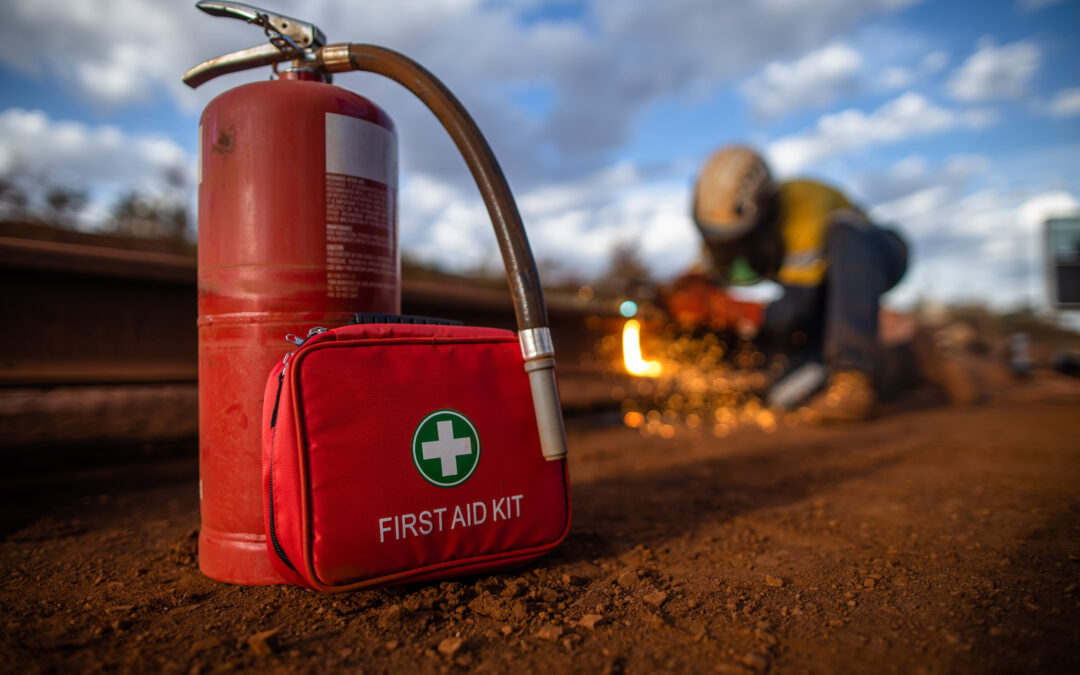From 2015 to 2019, there was an average of 38 inpatient hospitalizations every year for burns occurring in Louisiana workplaces. This is the most common reason for work-related hospitalizations for young workers.
Burn injuries in the workplace can lead to severe complications. The outlook is partially dependent on the types of burn, the severity of the burn, and how you respond.
Keep reading as we explore how to address burn injuries in the workplace.
Understanding Different Types of Workplace Burn Injuries
Workplace burn injuries can occur in various forms, each with its own characteristics and potential complications. Understanding these different types is crucial for identifying the appropriate treatment.
Thermal Burns
These are the most common workplace burns resulting from contact with hot objects, steam, or flames. They can cause damage to the skin’s layers, leading to pain, blisters, and scarring.
Chemical Burns
Exposure to hazardous chemicals like acids or alkalis can cause chemical burns. These burns may not always be immediately apparent but can have severe long-term effects on the skin and underlying tissues if not treated promptly.
Electrical Burns
An electrical current that passes through the body during a workplace accident can result in electrical burns. These burns often appear minor on the surface but may cause significant internal damage due to their ability to affect vital organs.
Friction Burns
Commonly seen in industries that involve machinery or equipment usage, friction burns occur when skin comes into contact with abrasive surfaces such as conveyor belts or grinding wheels. The resulting injury may range from superficial wounds to deep tissue damage.
Scald Burns
These burns occur when hot liquids or steam come into contact with the skin. They are commonly seen in restaurant and hospitality settings. However, they can also impact industrial workplaces.
Identifying Severity Levels of Burn Injuries
Understanding the severity of a burn is crucial for appropriate treatment and recovery. Burn injuries can range from mild to severe, with varying degrees of damage to the skin and underlying tissues.
First-Degree Burns
These are considered mild burns that only affect the outermost layer of the skin, known as the epidermis. They typically cause pain, redness, and minor swelling but do not result in blisters or open wounds.
Second-Degree Burns
This type of burn affects both the epidermis and a portion of the underlying dermis layer. It often causes blistering, intense pain, swelling, and redness. Second-degree burns may also lead to scarring if not properly treated.
Third-Degree Burns
These burns penetrate all dermis layers and can even extend into the fat layer below. The affected area may appear charred or white due to nerve damage that limits sensation in the region.
Fourth-Degree Burns
This is one of the more severe types of burns; fourth-degree burns go beyond tissue destruction. They can involve injury to tendons, ligaments, or even internal muscles.
What to Do About Burn Injuries in the Workplace
When dealing with burn injuries in the workplace, time is of the essence. Acting quickly can significantly affect the outcome for the injured employee. Here are some steps you should take if someone experiences a burn injury on the job:
Seek Immediate Medical Attention
Regardless of the severity of the burn, it’s crucial to get medical help immediately. Even minor burns can become infected if not properly treated.
Document Incident Details
It’s essential to record all relevant information. For future reference and insurance purposes, include information about how and where the accident occurred.
Report to Your Employer
Inform your supervisor or HR department immediately. This allows them to initiate an incident report and begin investigating ways to prevent similar accidents from happening again.
Follow Up With Healthcare Professionals
Ensure appropriate follow-up care is provided based on medical advice after initial treatment.
When to Hire a Lawyer for a Workplace Burn Injury
Dealing with a workplace burn injury can be overwhelming, but knowing when to hire a lawyer can help ensure you receive the compensation you deserve. Here are some scenarios where seeking legal help may be necessary.
Severity of the Injury
If your burn injury is severe, requiring extensive medical treatment or resulting in long-term disability, it may be crucial to consult with a lawyer. They can assess the impact on your life and fight for fair compensation for medical expenses, lost wages, and future care needs.
Employer Negligence
Hiring a lawyer becomes even more critical if your burn injury was caused by employer negligence or failure to provide a safe working environment. They can investigate your accident’s circumstances and hold responsible parties accountable for their actions.
Denial of Compensation
If your workers’ compensation claim has been denied or undervalued, it may be time to seek legal help. An experienced lawyer can navigate complex laws and negotiate to help you receive compensation you may deserve.
Insurance Disputes
Sometimes, insurance companies may try to minimize payouts or deny claims altogether. In such cases, having an experienced lawyer can level the playing field and increase the likelihood of a favorable settlement or court judgment.
Hire an Experienced Louisiana Lawyer
You may be entitled to compensation if you’ve received burn injuries in the workplace. Working with an experienced attorney can help.
At Talbot, Carmouche & Marcello, we’ve been fighting for the people of Louisiana for over 50 years. Our legal team will handle your case with patient, kind, and caring support.
Contact us today for a free initial consultation.

